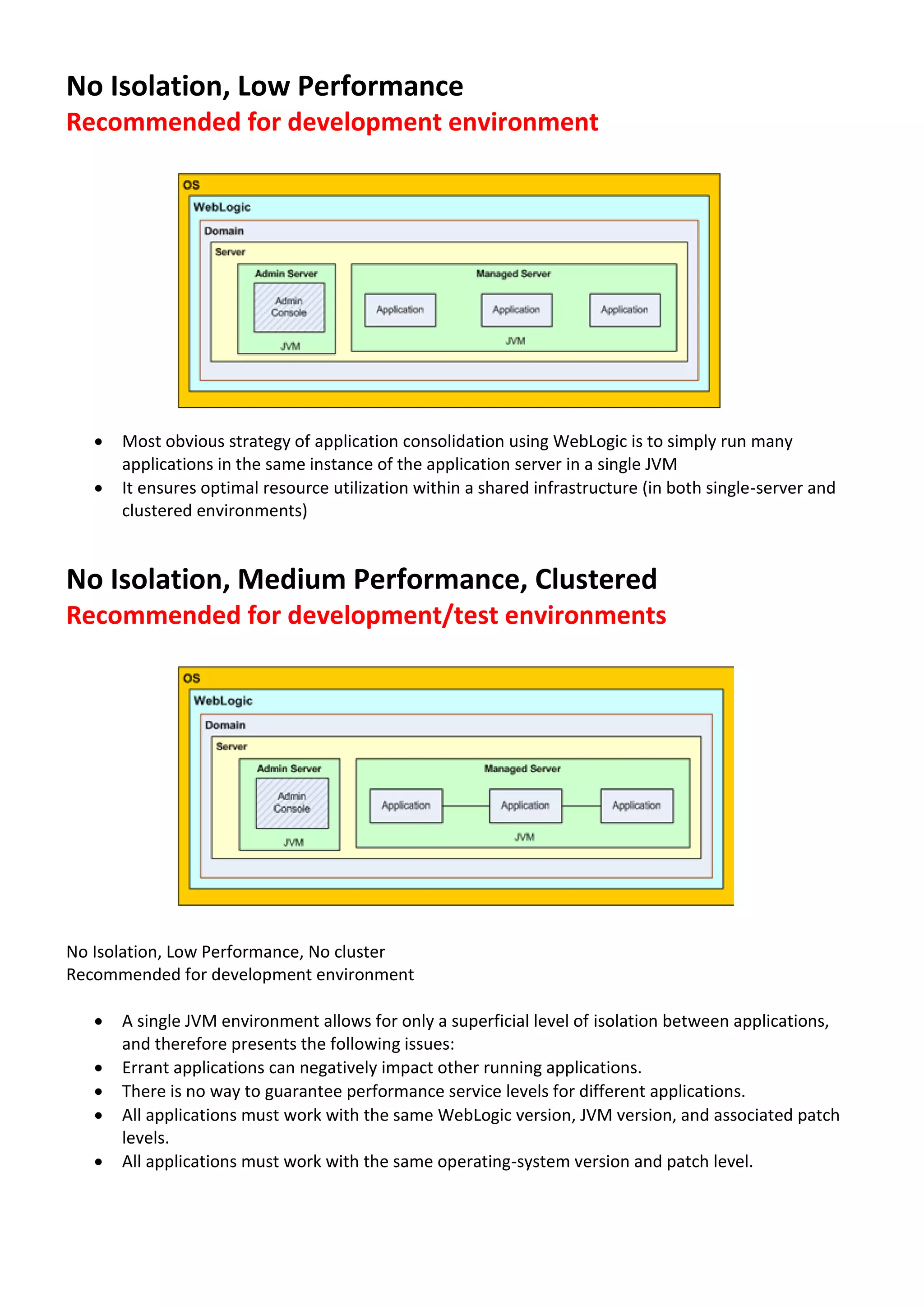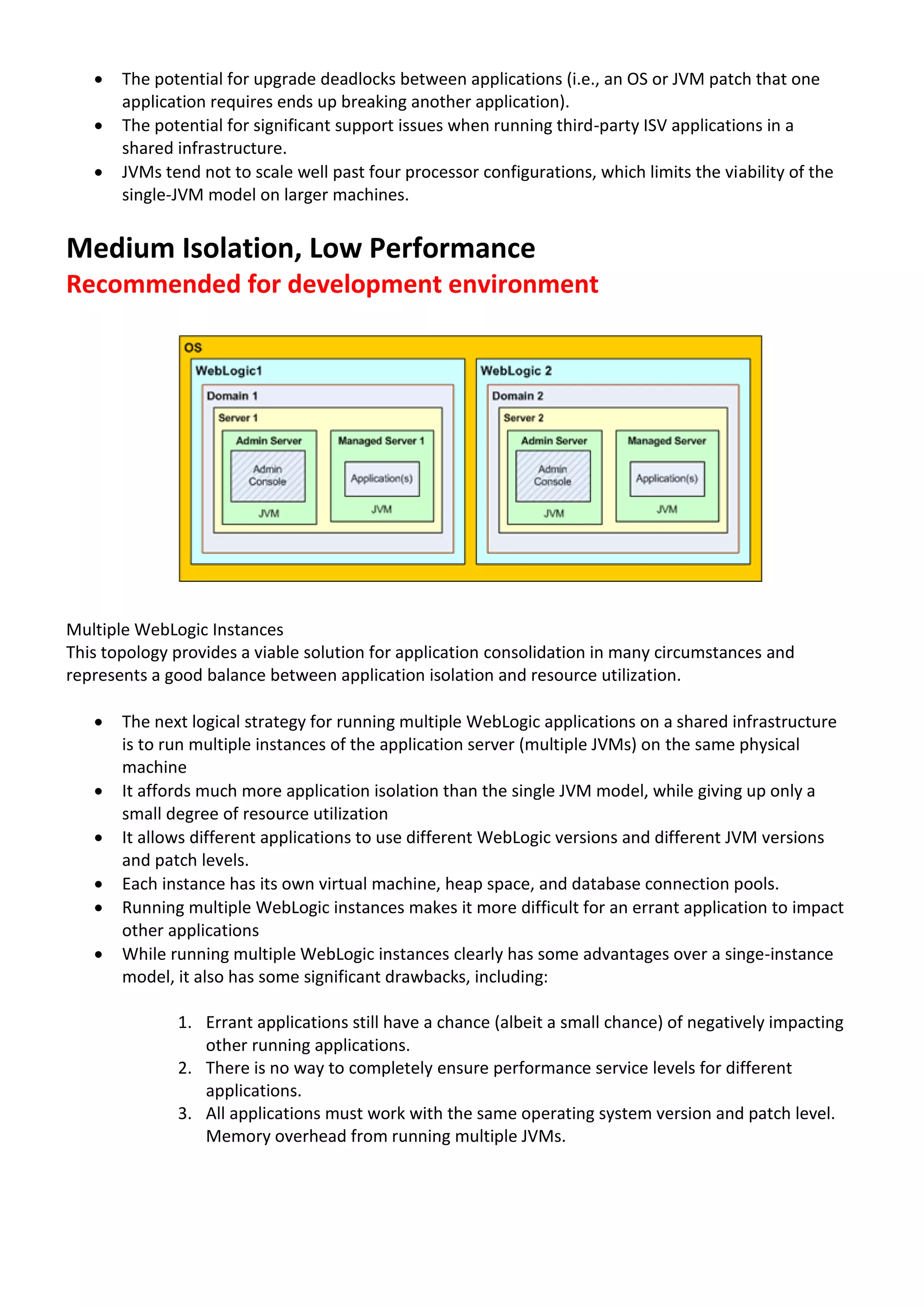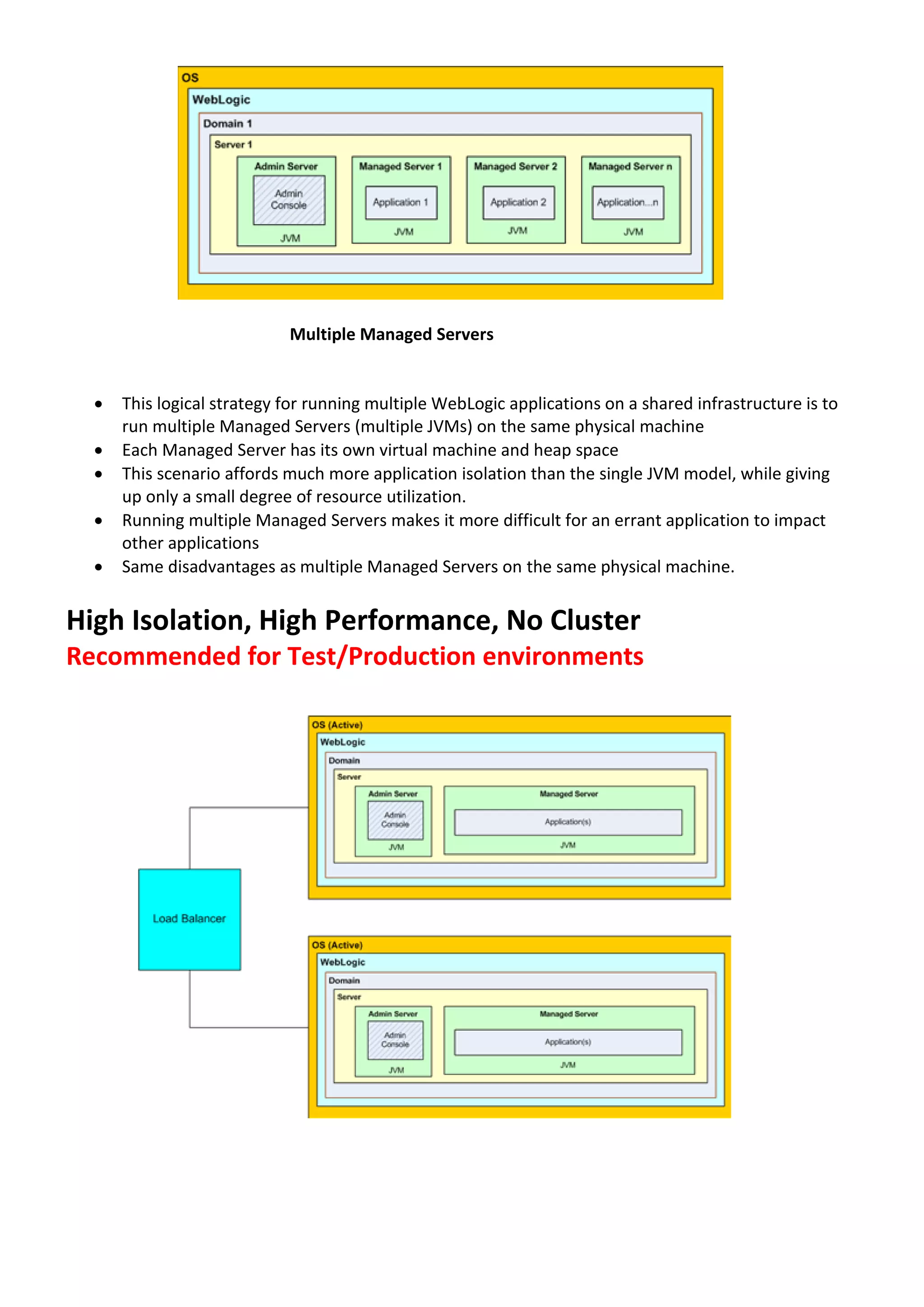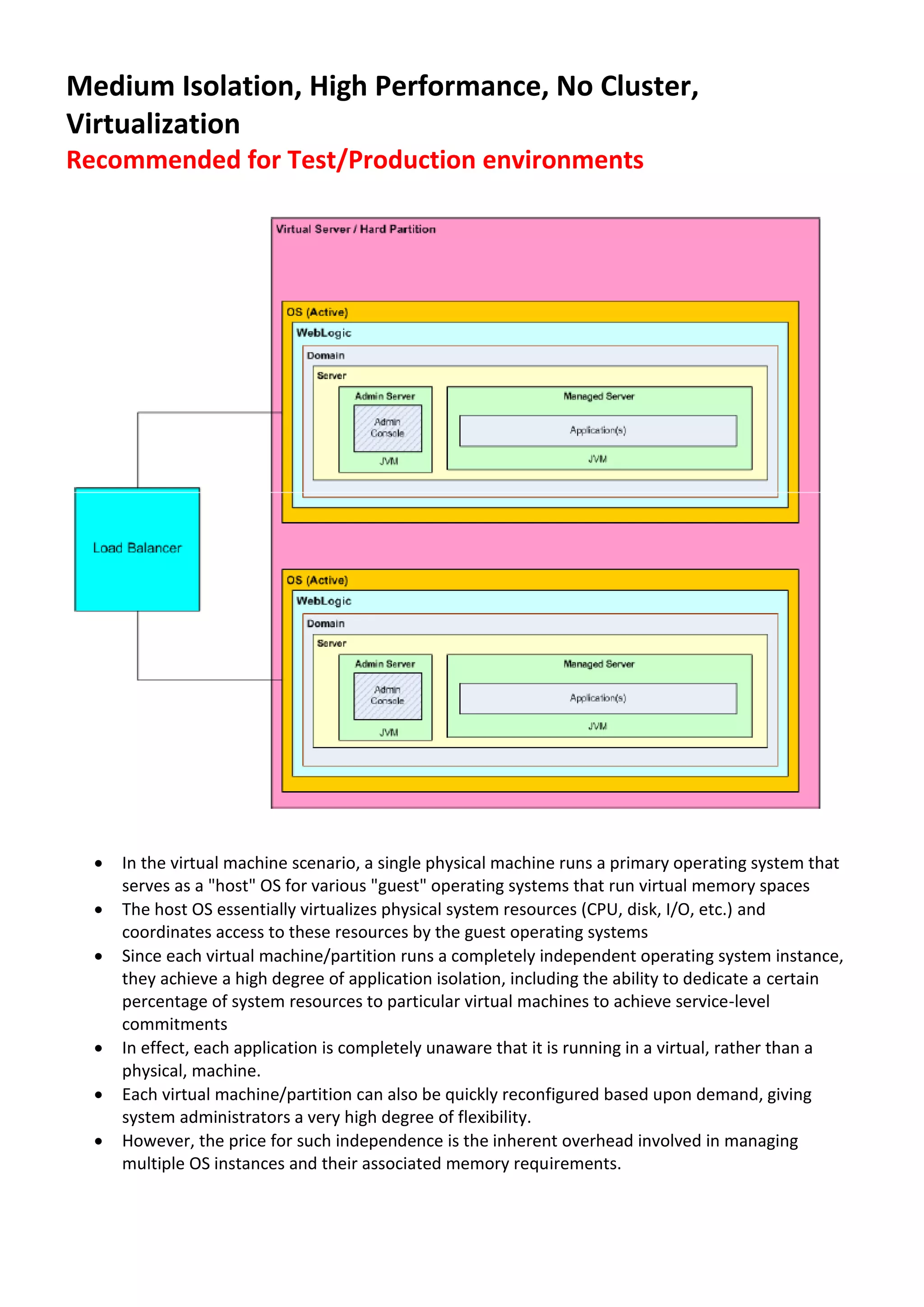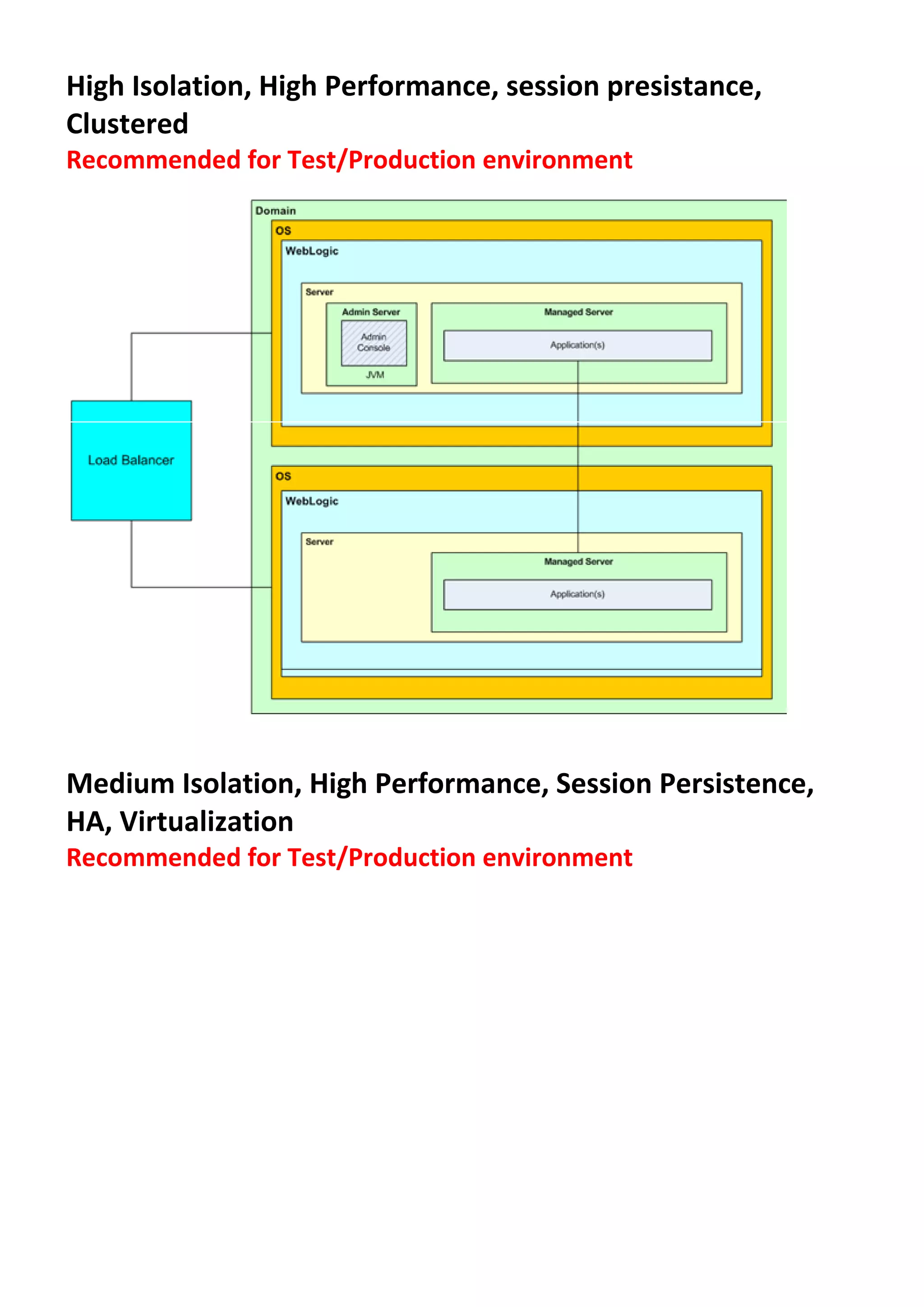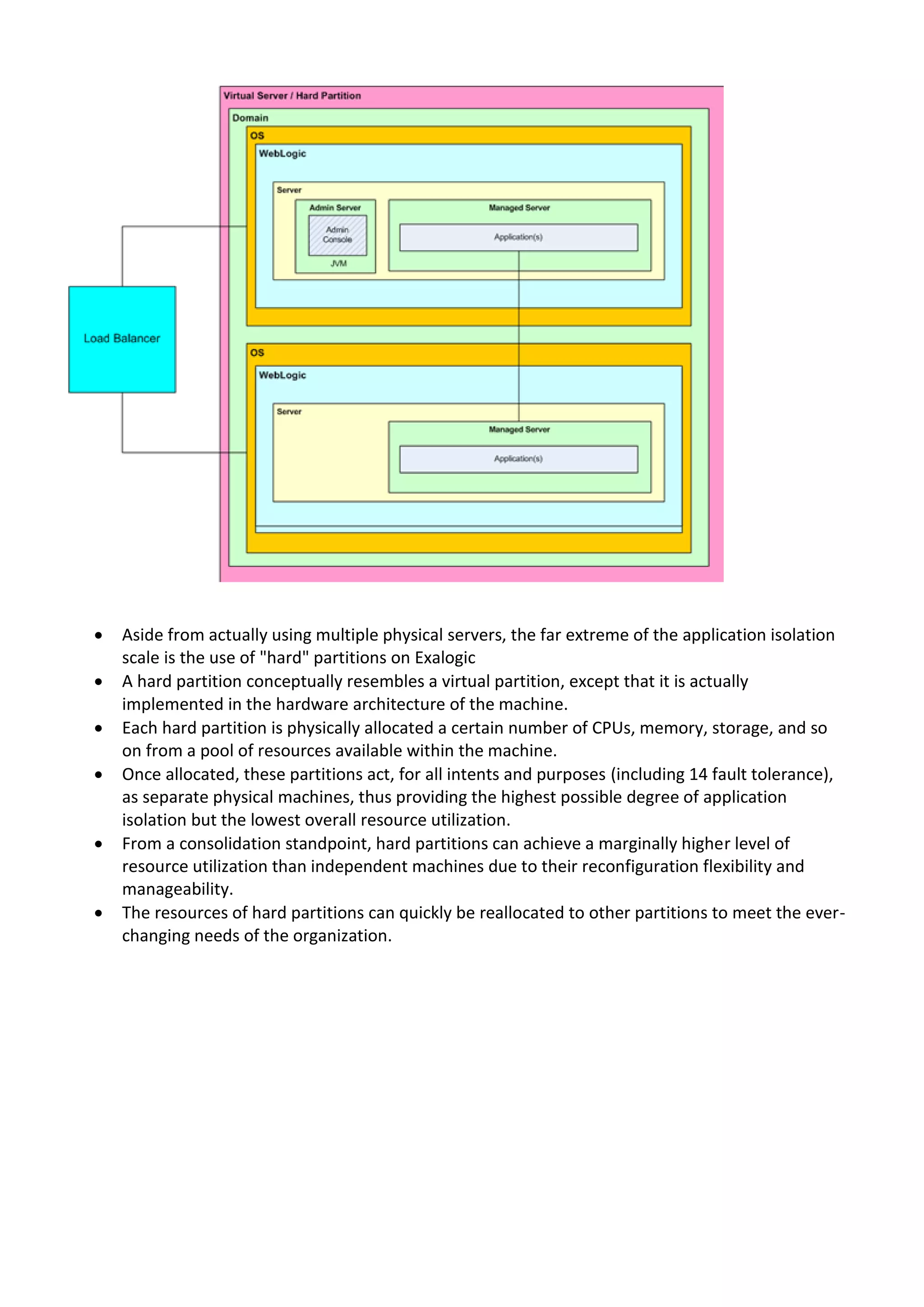This document discusses different WebLogic topology strategies with varying levels of application isolation and performance. It recommends strategies such as running multiple WebLogic instances, multiple managed servers, or virtual machines on a single physical server for development/test environments, and using clusters, session persistence, or hardware partitions for production environments. The goal is to consolidate applications while balancing isolation and resource utilization.

